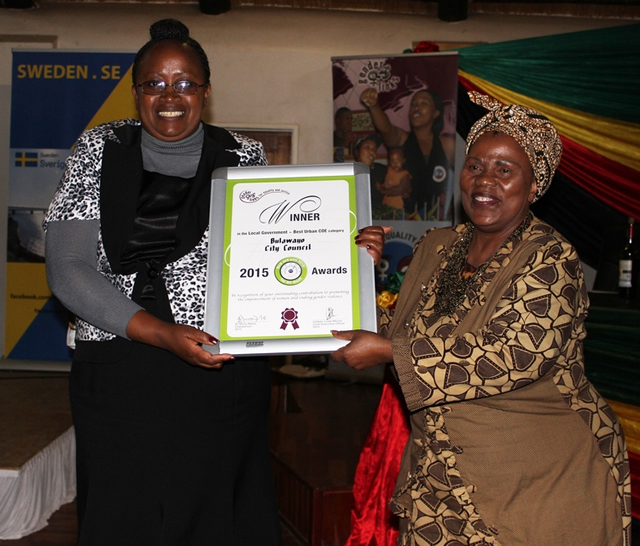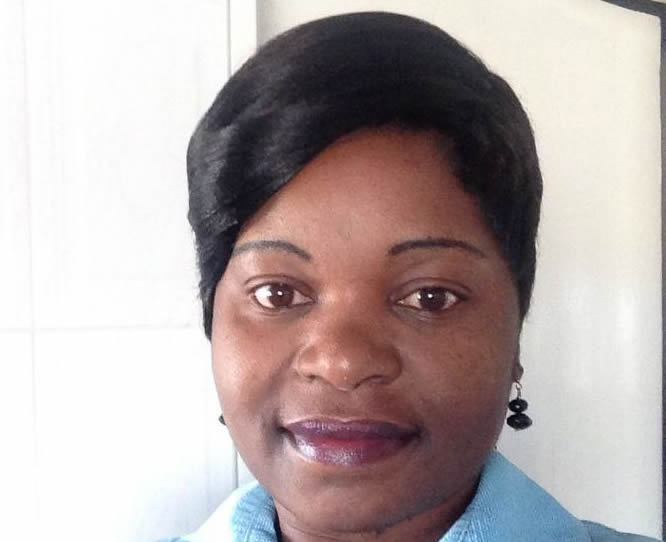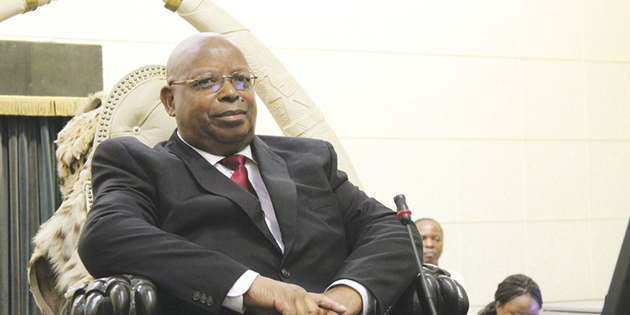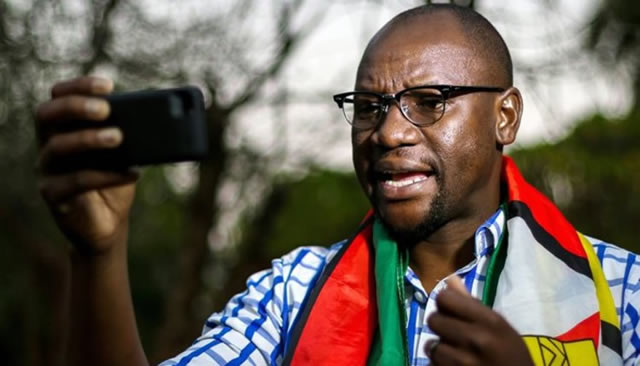Gender equality: Local authorities walk the talk


Gender and Community Development Deputy Minister Abigail Damasane (right) poses for a photo with Bulawayo City Council gender focal person Audrey Manyemwe after the latter won award at the Zimbabwe National Gender Summit held in Harare last year
Ruth Butaumocho : Gender Editor
When the Government appended signatures to various protocols on gender equality soon after independence in 1980, several critics dismissed the decision as nothing but grandstanding. However, the decision has resulted in the main streaming of gender across both public and private institutions, in a milestone achievement that has improved the status of women.It is undisputed that women’s social, political and economic status is now better than what it was more than three decades ago.
With the exercise still ongoing, local authorities in Zimbabwe have been touted as “centres of excellence” in embracing gender main streaming across its operations.
Local authorities, through multiple engagements with their parent ministry, the Ministry of Local Government, Public Works and National Works, are currently implementing various major changes from service provision right up to employment conditions within municipalities.
“Gender main streaming processes have been highly successful in local government.
“Through working with local authorities, we have been able to popularise and enhance application of the SADC Gender Protocol, through the various projects that we are implementing across municipalities,” said Gender Links country manager (Zimbabwe) Ms Priscilla Maposa.
She said her organisation decided to work with local authorities after realising that they were closer to communities through the service they provide on a daily basis, than any other ministry.
“They offer basic services like water, sanitation, health facilities and shelter.
“We realised that their service provision should be gender-sensitive so that they can cater for both men and women through provision of gender sensitive delivery,” she said.
Gender Links, through its Zimbabwe Centres of Excellence in gender main streaming programme, is currently working with 43 out of the country’s 92 councils in implementing various gender action plans.
Some of the gender actions plans that Gender Links and local authorities have been working on include construction of maternity hospitals, promotion of females in male dominated fields such as engineering and gender main streaming activities through gender focal persons.
Raising awareness on the dangers of gender based violence has also kept local authorities on their toes, holding awareness campaigns throughout the year in a bid to reduce incidences of violence in communities.
“Local authorities have been walking the talk and the results have really made an impact in aiding the work we are doing in gender main streaming.
“For instance the Local Government ministry now requires that all councils should have a gender focal person.
“Gender Links took advantage of this directive and now works closely with focal persons from 43 councils to drive the centre of excellence from within. This has really helped us,” said Ms Maposa.
Ms Maposa added that the gender focal persons had been strategic as they work together with officers from both the ministries of local government and gender to push for gender equality.
From its inception, the centre of excellence programme on gender equality has gained momentum with several districts taking a lead in coordinating various gender activities.
Realising the need to mainstream gender in all its activities, Murehwa Rural District Council recently formed a district gender committee comprising all the key partners and functionaries within the district.
And at council level, councils like Ruwa and Chegutu have followed the concept initiated by the Harare City Council of having gender focal points at departmental level.
“Another important facet that has been learnt through the gender focal points is their ability to have a succession plan in place for sustenance of the centre of excellence programme.
“A case in point is that of the Harare City Council and Chegutu Municipality which have managed to have new focal persons succeeding previous one.
“That development alone will help to extend the longevity of the centre of excellence process,” she said.
Although the main streaming of gender in local authorities has been faced with financial challenges, which sometimes limit council’s programming, the Ministry of Local Government, Public Works and National Housing says it remains committed to gender main streaming.
Speaking at 2015’s gender national summit, principal director (urban-local authorities) for Local Government Ms Erica Jones said the ministry had intensified the institutionalisation of gender main streaming through issuing circulars to councils and municipalities and appointment of active gender focal persons at ministry and at the level of local authorities.
She added that the local government board now ensures that when a male and female candidate perform equally in an interview preferences are given to a female candidate in a move to promote gender equality.
While the local government is doing all it can to mainstream gender, the mismatch on its efforts and what is actually on the ground cannot be ignored.
If anything, it should be a cause for concern.
The Zimbabwe SADC Gender Protocol Barometer 2015, highlighted that women’s representation in local government – urban and rural councils – decreased from 19 percent to 16 percent following the 2013 general elections.
“This is due to the absence of a special measure in the new Constitution for women at this level,” reads the Barometer.
“In addition, stakeholders at this level conducted the election of the urban and rural councillors using the first-past-the-post (FPTP) system, which does not favour the representation of women candidates.”
The FPTP is an electoral system whereby the candidate with the majority votes takes all.
It is different from the proportional representation (PR) system which recognizes the ratios of voters by all candidates. This means that even women candidates, who have not won, will be represented based on the percentage of votes cast for the contestant.
This system is what was use in the 2013 elections where an additional 60 seats in parliament were reserved for women candidates based on the percentage that their party won in the elections.
The Barometer adds that the constitutional alignment process provides an opportunity for a strong and visible lobby movement deriving from Chapter 17 which calls for gender balance in public and private institutions.
The advocacy would be for lawmakers to implement the gender balance measure to increase women’s representation in local authorities beyond the 2018 elections.











Comments